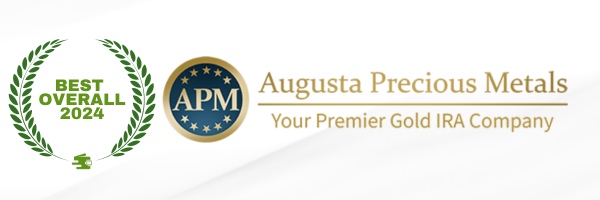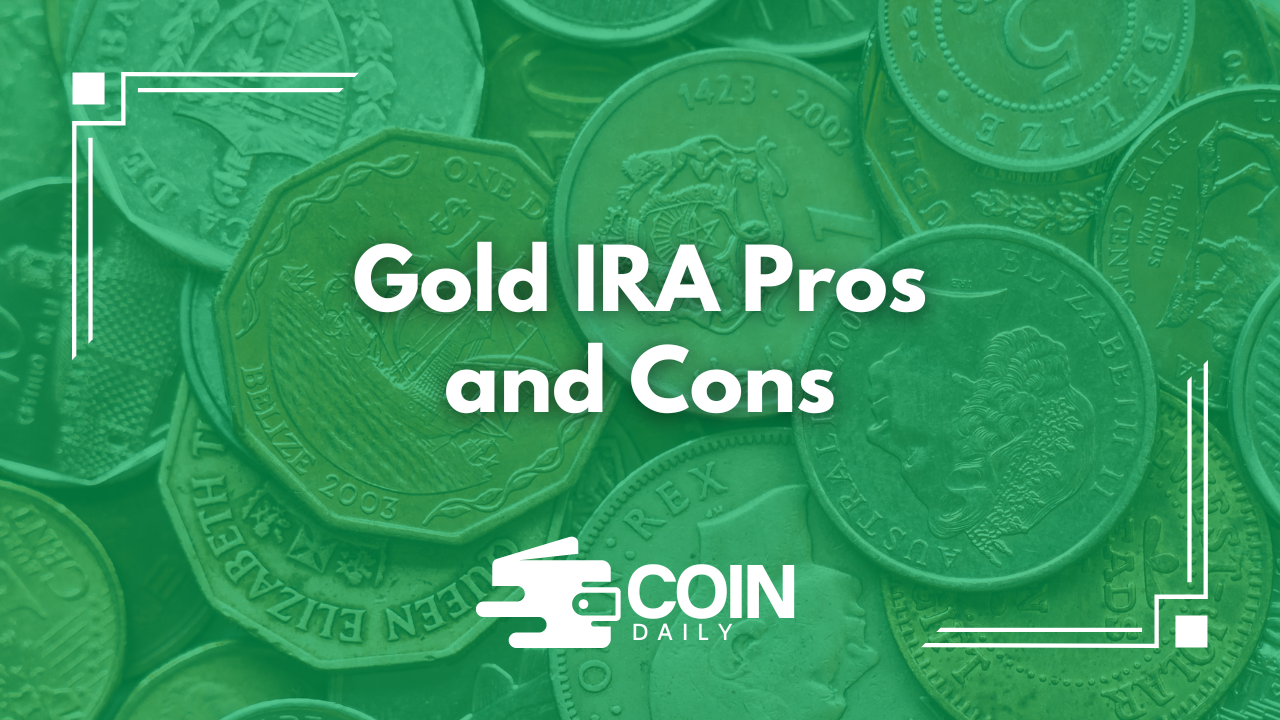Are you contemplating the diversification of your retirement portfolio? A Gold IRA may be the solution you need.
This alternative investment avenue allows you to include physical gold and other precious metals in your retirement account, presenting both unique benefits and challenges.
In this article, we will explore what a Gold IRA is, how it functions, and the potential advantages and drawbacks of investing in this gold-backed retirement option. We will also discuss who might find it beneficial, the process of setting one up, and alternative options to consider.
Engage with the content to determine whether a Gold IRA aligns with your financial future.
What Is a Gold IRA?
A Gold IRA, or Individual Retirement Account, is a specialized retirement account that enables investors to hold physical precious metals, including gold bullion and gold coins. This investment option presents a unique opportunity for diversification within a retirement portfolio, potentially offering long-term growth while safeguarding against market volatility and inflation.
By incorporating gold into your retirement savings strategy, you can leverage the demand for gold as a safe haven asset, thus enhancing your financial security and protecting your wealth.
How Does a Gold IRA Work?
A Gold IRA functions much like a traditional retirement account, but it is specifically designed for investing in physical gold and other approved precious metals. With a self-directed IRA, individuals enjoy the flexibility to select their investment options, which can include gold mining stocks and gold-backed assets, all while complying with specific custodial services and IRS regulations.
Typically, the process involves rolling over existing retirement funds from a 401(k) or traditional IRA, enabling tax-deferred growth and allowing for a strategic approach to asset allocation.
Also check out: Augusta Precious Metals Review
What Are the Pros of Investing in a Gold IRA?

Investing in a Gold IRA offers several advantages that are particularly appealing for individuals seeking to bolster their retirement savings and secure their financial future.
One significant benefit is diversification; gold and other precious metals can serve as a hedge against inflation and market fluctuations, offering stability during economic downturns. Furthermore, the potential for long-term growth through gold investment options, such as gold bullion and coins, can play a vital role in creating a well-rounded retirement portfolio.
1. Diversification of Portfolio
Diversifying a portfolio is essential for managing investment risk, and a Gold IRA offers a distinctive approach to achieve this by incorporating precious metals. By including gold in your retirement account, you can create a balance against stock market fluctuations and enhance your asset allocation strategy, ultimately fostering financial independence and stability.
This strategy may prove particularly beneficial during times of economic instability, when traditional equities might experience significant volatility. For example, during the 2008 financial crisis, gold prices surged while stock valuations fell sharply, demonstrating gold’s ability to retain value reliably.
Investors who included gold in their portfolios have historically benefited from its performance as a hedge against inflation and currency devaluation. Furthermore, diversifying with a Gold IRA not only aids in wealth preservation but also presents opportunities for tax advantages, making it an appealing option.
By comprehending these various strategies for mitigating risks, especially during turbulent periods, investors can develop a more resilient retirement plan.
2. Protection Against Inflation
Gold is often viewed as an effective hedge against inflation, making a Gold IRA a prudent option for individuals concerned about rising prices and potential economic downturns. Historically, gold prices tend to rise alongside inflation, offering a layer of financial security for investors looking to safeguard their retirement savings.
As economies enter periods of inflation, the purchasing power of fiat currencies typically diminishes, prompting investors to seek refuge in tangible assets such as gold. This asset has demonstrated resilience during times of economic uncertainty, reinforcing the belief that it acts as a reliable buffer against inflation.
In various historical scenarios, like the stagflation of the 1970s or more recently during economic crises, a noticeable correlation has emerged between rising inflation rates and the upward movement of gold prices.
For individuals considering a Gold IRA as part of their retirement strategy, understanding these dynamics can significantly enhance their investment approach. This knowledge allows for a more knowledge-based decision making process aimed at mitigating risk and preserving wealth in the face of unforeseen economic fluctuations.
3. Potential for Higher Returns

One of the appealing aspects of a Gold IRA is its potential for higher returns compared to traditional investments. As demand for gold fluctuates with market trends, making a well-timed investment in gold-backed assets can result in substantial gains, which makes it a viable option for wealth preservation and retirement income planning.
Historically, gold has demonstrated resilience during economic downturns and is frequently viewed as a safe-haven asset in times of inflation or currency fluctuations. Recent years have seen geopolitical tensions and shifts in interest rates further enhancing the appeal of gold, leading to an increase in its prices.
Analysts indicate that incorporating gold into a diversified investment portfolio can improve overall performance, especially when conventional markets are experiencing volatility. Knowledgeable investors often use strategies such as dollar-cost averaging or strategically timing their purchases during market dips to maximize potential returns, thereby reinforcing gold’s position as a strategic asset in investment planning.
Check Out the Best Gold IRA Company of 2024
There are over 200+ gold IRA companies in the US and among all of them, I believe Augusta Precious Metals is the best one so far.

Augusta Precious Metals ranks as the #1 gold IRA company in the US. And that’s for good reason.
They have some of the best product catalogs with gold, silver, platinum, and palladium products to offer. But the main highlight is their dedicated web conference and the added focus on client education.
Augusta has an A+ rating on BBB, 1000+ client testimonials, and has been awarded “Most Transparent Company” in 2023 by Investopedia.
No other company puts as much focus on educating their clients about the different aspects of gold IRAs as they do.
My own experience with them was amazing to say the least.
However, their minimum investment requirement is $50,000 which limits the number of people who can open a gold IRA with them. Still, if you have the budget, you shouldn’t look elsewhere.
What Are the Cons of Investing in a Gold IRA?
While a Gold IRA presents several benefits, it is important to thoughtfully consider the potential downsides before fully committing to this investment strategy.
One notable concern is the high fees and expenses associated with maintaining a Gold IRA, which can significantly impact your returns. Furthermore, fluctuations in gold prices introduce investment risks, and the limited liquidity of physical gold may complicate the process of making withdrawals.
1. High Fees and Expenses
One of the most notable drawbacks of a Gold IRA is the high fees and expenses that can accumulate over time. These fees often pertain to custodial services, storage, and transaction costs, which can significantly impact your overall investment decisions as you work to protect your assets.
When investors compare these costs to those associated with traditional IRAs, they often find that Gold IRAs typically require higher initial investments and ongoing charges, which can ultimately diminish long-term returns. For example, while traditional IRAs usually feature lower management fees, Gold IRAs may entail additional expenses such as insurance for the physical assets.
To effectively manage these costs, it is advisable to conduct thorough research on potential custodians. This includes asking specific questions about their fee structures and any hidden charges that may apply. By exploring competitive rates and gaining a clear understanding of the total cost of ownership, investors can significantly enhance the profitability of this alternative investment.
2. Fluctuations in Gold Prices

Fluctuations in gold prices can present significant investment risks for individuals considering a Gold IRA as part of their retirement strategy. The market’s volatility, influenced by economic factors such as supply and demand, geopolitical events, and changes in investor demographics, makes it quite challenging to predict gold prices.
Understanding these factors is essential for anyone contemplating a Gold IRA, as they can have a direct impact on the value of these investments. For example, sudden geopolitical tensions often lead investors to seek gold as a safe haven, which can temporarily inflate its price. Conversely, shifts in global economic stability may result in decreased demand.
To manage the risks associated with this volatility, diversifying investment strategies can prove beneficial. Regularly monitoring market conditions, using price alerts, and staying informed about global economic indicators can enable investors to make timely and informed decisions.
Thus, adopting an informed approach is crucial for preserving and potentially enhancing the value of Gold IRA investments.
3. Limited Liquidity
When considering an investment in a Gold IRA, one important factor to keep in mind is its limited liquidity compared to other assets. This limitation can impact your ability to make withdrawals when you need them, which may present challenges during financial emergencies or when trying to meet specific retirement income goals.
Liquidity issues can create obstacles in accessing funds, especially in unforeseen circumstances. Since physical gold often needs to be sold or liquidated in a market that can be unpredictable, investors might find themselves scrambling to locate buyers or accepting lower prices than anticipated.
This reality highlights the importance of careful financial planning and well-thought-out withdrawal strategies. Relying on these assets means that one may need to prioritize cash reserves in other areas. For those who are concerned about these limitations, diversifying their portfolio with more liquid assets or exploring gold-backed financial products could be a practical solution.
This approach allows for continued exposure to gold while ensuring that necessary funds remain accessible.
Is a Gold IRA a Good Investment for Everyone?
Determining whether a Gold IRA is a suitable investment for an individual really hinges on their unique circumstances, such as their retirement goals, risk tolerance, and overall financial stability.
For some, a Gold IRA can be a valuable addition to their portfolio, while others may discover that it doesn’t quite fit with their investment strategy or personal needs.
1. Age and Retirement Goals
Age and specific retirement goals are significant factors in determining whether a Gold IRA aligns with an individual’s investment strategy. Younger investors typically prioritize growth potential, while those approaching retirement tend to focus more on wealth preservation and stability.
For younger individuals, who often have a longer investment horizon, the emphasis may be on aggressive growth strategies. They might seek to capitalize on the appreciation of various assets, including precious metals. In this context, a Gold IRA could be viewed as a valuable component of a diversified portfolio aimed at maximizing returns over several decades.
Conversely, older investors, particularly those who are nearing retirement or already retired, usually adopt a more risk-averse stance. They may consider Gold IRAs as a means to protect their accumulated wealth against inflation and market volatility, ensuring that their savings will sustain them throughout retirement.
It is essential to align these varying investment approaches with clearly defined retirement objectives. This alignment not only dictates the level of risk an individual is willing to take but also helps in crafting an effective retirement plan tailored to their specific needs.
2. Risk Tolerance
Risk tolerance is an essential factor to consider when evaluating a Gold IRA as an investment option. Investors with a high-risk tolerance may be more likely to include gold in their portfolios, while those who prefer stability might gravitate towards more traditional assets.
Understanding these different risk profiles is crucial for determining the appropriate asset allocation. For example, those who are comfortable with market volatility may be more receptive to the potential for significant returns that gold investments can provide, particularly during times of economic uncertainty.
On the other hand, conservative investors might focus on a balanced approach, strategically incorporating gold to hedge against inflation or economic downturns. To effectively assess personal risk profiles, individuals should consider their financial goals, investment timelines, and emotional reactions to market fluctuations. This reflection can greatly inform their overall investment strategy.
Ultimately, achieving a suitable asset allocation can enhance returns while effectively managing risk.
3. Financial Stability
Financial stability plays a crucial role in determining whether a Gold IRA is a suitable investment option. Individuals with a strong financial foundation may find it easier to incorporate gold into their retirement strategy, while those in less stable situations might need to prioritize their immediate financial needs.
For instance, individuals who manage their debts well, maintain a steady income, and have sufficient savings can consider allocating a portion of their portfolio to precious metals such as gold. This strategy not only serves as a hedge against inflation but also provides a means of preserving wealth during times of economic uncertainty.
On the other hand, those facing cash flow challenges may want to concentrate on fulfilling short-term financial obligations before diversifying their investments. By critically evaluating their financial situation, investors can develop a balanced approach that ensures both stability in their present circumstances and potential growth through prudent investments, such as a Gold IRA.
How to Set Up a Gold IRA?
Establishing a Gold IRA requires several important steps to ensure adherence to IRS regulations while also maximizing your investment strategy. The process usually begins with the selection of a reputable custodian who specializes in gold investments.
It is also crucial to understand the rollover options available from your existing retirement accounts.
What Are the Alternatives to a Gold IRA?
A Gold IRA is certainly a popular option for individuals interested in investing in precious metals. However, it is important to explore several alternatives that might align more closely with specific investment strategies and goals.
Traditional IRAs, Roth IRAs, and 401(k) plans each provide distinct benefits and investment choices, all of which can contribute to a well-rounded retirement portfolio.
1. Traditional IRA
A traditional IRA is a commonly used retirement account that enables individuals to contribute pre-tax earnings, which in turn provides tax benefits that can significantly enhance overall retirement savings. This investment vehicle offers a variety of investment options, making it a flexible choice for many individuals.
Each year, the contribution limit for traditional IRAs is adjusted, allowing investors to contribute up to $6,500 if they are under the age of 50, and up to $7,500 for those aged 50 and above. This structure creates opportunities for more aggressive saving as retirement approaches.
Moreover, contributions to a traditional IRA may be tax-deductible, which helps reduce taxable income in the year the contributions are made. This allows investments to grow tax-deferred until withdrawal, potentially leading to substantial long-term growth.
In contrast to Gold IRAs—which permit investments in precious metals and may serve as a hedge against inflation—traditional IRAs primarily concentrate on stocks, bonds, and mutual funds. Each investment option carries its own set of advantages and disadvantages, catering to varying investor preferences and risk tolerances.
2. Roth IRA
A Roth IRA provides several distinct advantages, especially when it comes to tax benefits. Contributions to a Roth IRA are made with after-tax dollars, which means that withdrawals during retirement are tax-free. This characteristic makes it an appealing option for individuals who expect to find themselves in a higher tax bracket in the future.
In contrast to traditional IRAs, where contributions may be tax-deductible but withdrawals are subject to ordinary income tax, a Roth IRA allows account holders to enjoy their savings in retirement without tax implications. This can greatly enhance retirement planning, enabling individuals to manage their income streams more effectively and avoid unforeseen tax burdens.
On the other hand, Gold IRAs typically adopt a different approach, focusing on investments in precious metals rather than emphasizing the tax advantages associated with Roth accounts. By understanding these differences, individuals can strategically balance their portfolios to maximize benefits according to their unique financial circumstances and retirement objectives.
3. 401(k) Plan
A 401(k) plan is a retirement account sponsored by employers that enables employees to save for retirement through salary deferrals, often coupled with matching contributions from the employer. This investment option can significantly boost retirement savings and serve as a strong foundation for financial security.
Participants have the flexibility to choose from a variety of investment options, including stocks, bonds, and mutual funds, which are essential for achieving growth over time. The annual contribution limits are often quite generous, allowing employees to set aside a considerable amount for their future.
While the advantages of employer matching can greatly enhance savings, it is important to be aware of potential limitations, such as restrictions on early withdrawals and associated tax implications.
When comparing 401(k) plans to Gold IRAs and other retirement accounts, a 401(k) presents distinct advantages, such as higher contribution limits and automatic payroll deductions. However, it may not offer the same level of diversification or inflation-hedging benefits that precious metals can provide.
If you want to learn about identifying gold IRA scams, I recommend getting this free checklist. It will equip you with the knowledge you need to avoid potential gold IRA scams.
Frequently Asked Questions
What is a Gold IRA and is it a good investment?
A Gold IRA is a retirement account that allows individuals to invest in physical gold or other precious metals. Whether it is a good investment depends on your personal financial goals and risk tolerance.
What are the pros of investing in a Gold IRA?
One of the biggest pros of a Gold IRA is its ability to act as a hedge against market volatility and inflation. Gold has a historically stable value and can provide a sense of security in uncertain economic times.
What are the cons of investing in a Gold IRA?
Some disadvantages of a Gold IRA include higher fees and potential storage costs. Additionally, the value of gold can fluctuate and may not provide the same level of returns as other types of investments.
How do I set up a Gold IRA?
You can set up a Gold IRA by working with a reputable custodian who specializes in precious metals. They will help you choose the right type of account and guide you through the process of purchasing and storing gold within the account.
What are the tax implications of a Gold IRA?
Similar to other retirement accounts, contributions to a Gold IRA may be tax-deductible. However, withdrawals are taxed as regular income. It’s important to consult a tax professional for specific details regarding your individual situation.
Can I add other types of investments to my Gold IRA?
Yes, you can diversify your Gold IRA by adding other types of investments such as stocks, bonds, and real estate. This can provide a well-rounded portfolio and further protect against market fluctuations.



